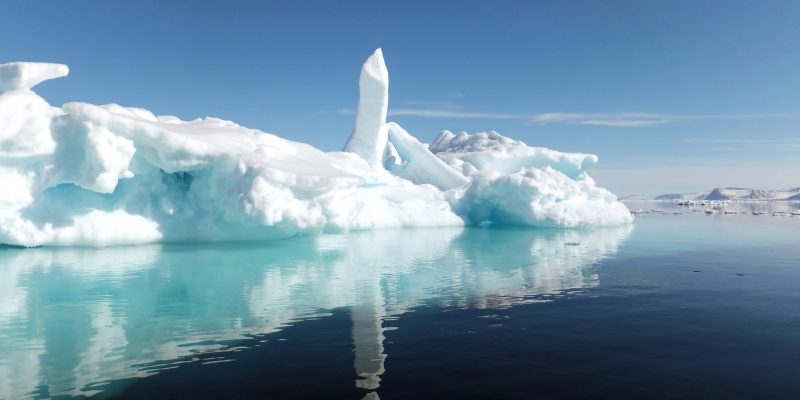The Arctic Is Heating at a Record Pace, With No Signs of Slowing
An alarming new report reveals the last five years have been the region's hottest in recorded history. The Arctic is the world’s fastest-warming region. (Paul Gierszewski (Gierszep) / Wikimedia Commons)
The Arctic is the world’s fastest-warming region. (Paul Gierszewski (Gierszep) / Wikimedia Commons)
Scientists at the National Oceanic and Atmospheric Administration released their Arctic Report Card this week, with the equivalent of failing grades for a critical marker of environmental health.
The oldest and thickest ice in the region has declined by 95 percent, meaning, as The Washington Post reported Monday, that “the sea at the top of the world has already morphed into a new and very different state, with major implications not only for creatures such as walruses and polar bears but, in the long term, perhaps for the pace of global warming itself.”
The age of the ice is directly related to its ability to protect the earth. “The younger the ice, the thinner the ice, the easier it is to go away,” Don Perovich, a scientist at Dartmouth who coordinated the sea ice section of the yearly report, told the Post. The thinner, younger ice may be able to regrow more easily, but as the Post notes, that’s not helpful for climate change: “It may not add much stability or permanence to the Arctic sea ice system if it just melts out again the next summer.”
In addition, according to the latest report card, the Arctic has experienced its hottest consecutive five years on record (2018 alone is the second hottest, with 1990 in the top spot overall), thinning the usually protective ice, and leaving not just the Arctic, but the world, more vulnerable to climate change.
According to The Daily Beast, “the warming Arctic climate may be exacerbating extreme weather events around the world, including extreme cold events, such as the winter storms felt in the northeastern United States last year.”
Rafe Pomerance, chairman of Arctic 21, a network of organizations focused on educating policymakers and others on Arctic climate change, told The Daily Beast, “The signals of decline are so powerful and the consequences so great that they demand far more urgency from all governments to reduce emissions.”
The 2018 edition of the report card is also the first time that NOAA includes warnings about red tide and algal blooms. In practical terms, “PBS NewsHour” points out, this means “toxins from these microorganisms are threatening marine wildlife and coastal fisheries, imperiling communities that depend on these species.”
Among the species in decline due to the ice shrinking are reindeer and caribou. “Arctic caribou in North America and Greenland and reindeer in Russia and Norway have declined 56 percent over the last two decades, with their populations dropping from 4.7 million to 2.1 million,” PBS notes. This is because of outbreaks of infectious disease-causing bacteria, brought on by hotter weather.
If the ice’s decline worsens and results in ice-free summers for earth, the planet will get even hotter, according to the report card, and even minor changes in weather can have devastating impacts. “In the Arctic Ocean, a difference of 2 degrees can be huge,” Walt Meier, a sea ice expert at the National Snow and Ice Data Center, told the Post. He added, “If it goes from 31 Fahrenheit to 33 Fahrenheit, you’re going from ice skating to swimming. … the Arctic is an early warning system for the climate.”
Read the full report card here.
Your support matters…Independent journalism is under threat and overshadowed by heavily funded mainstream media.
You can help level the playing field. Become a member.
Your tax-deductible contribution keeps us digging beneath the headlines to give you thought-provoking, investigative reporting and analysis that unearths what's really happening- without compromise.
Give today to support our courageous, independent journalists.






You need to be a supporter to comment.
There are currently no responses to this article.
Be the first to respond.